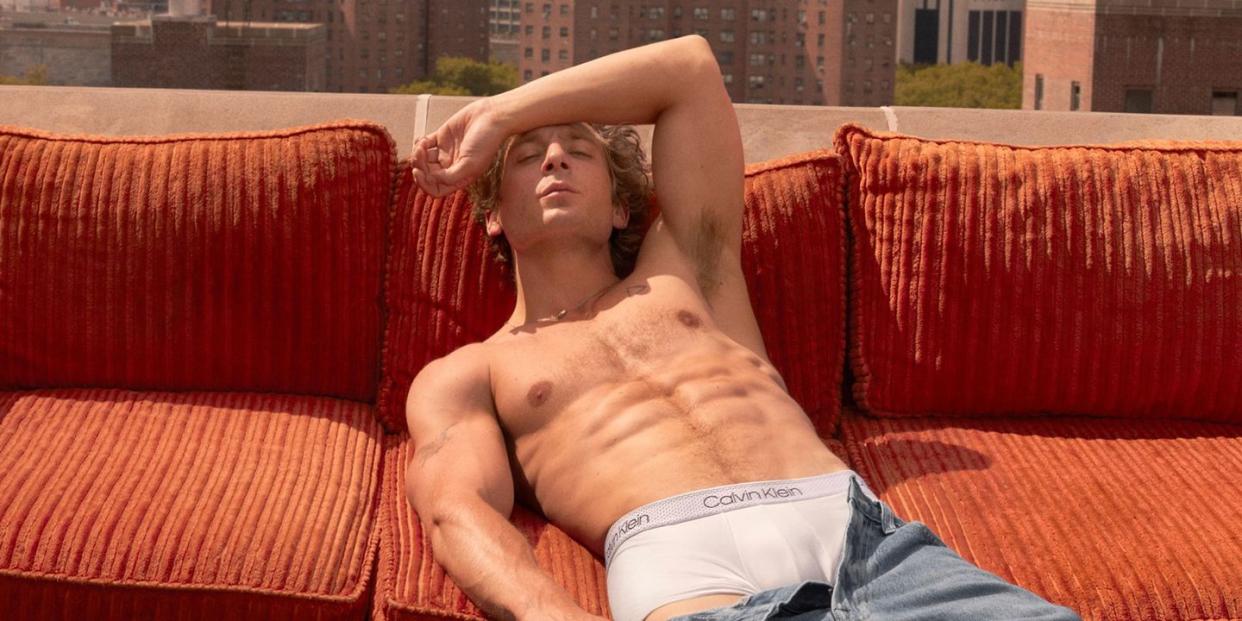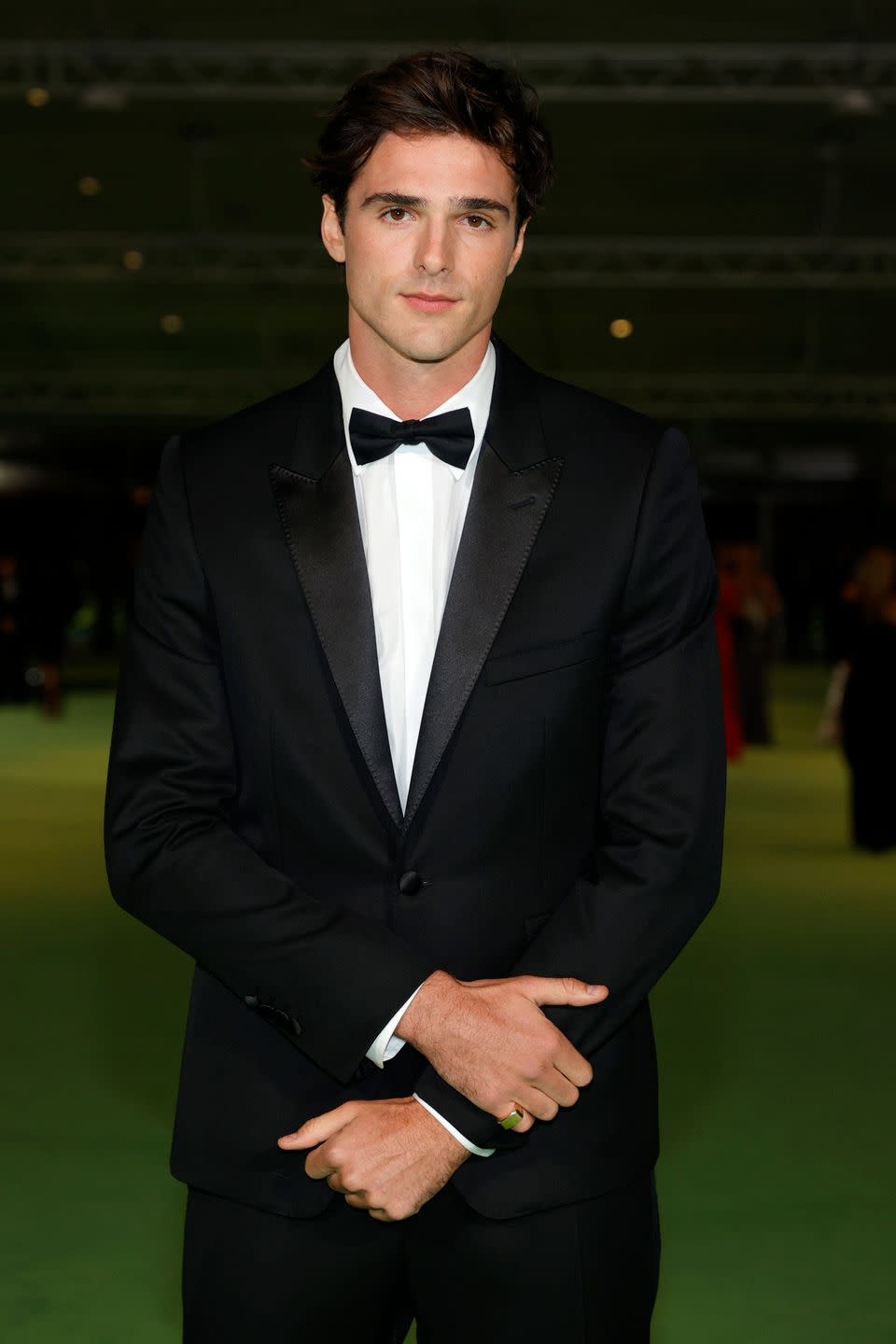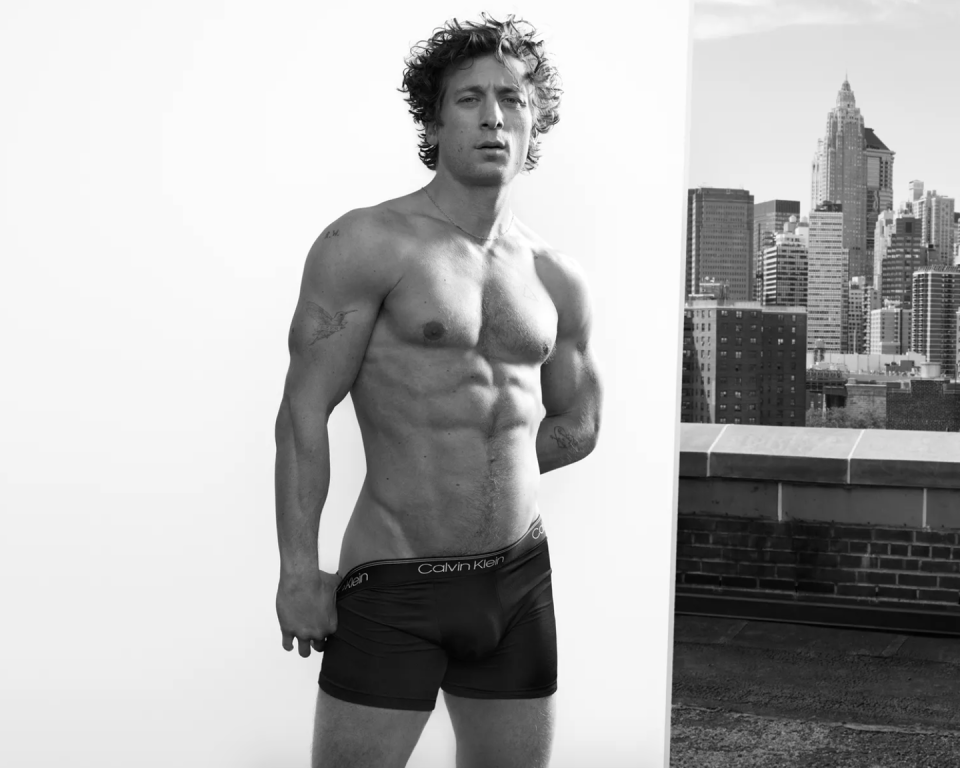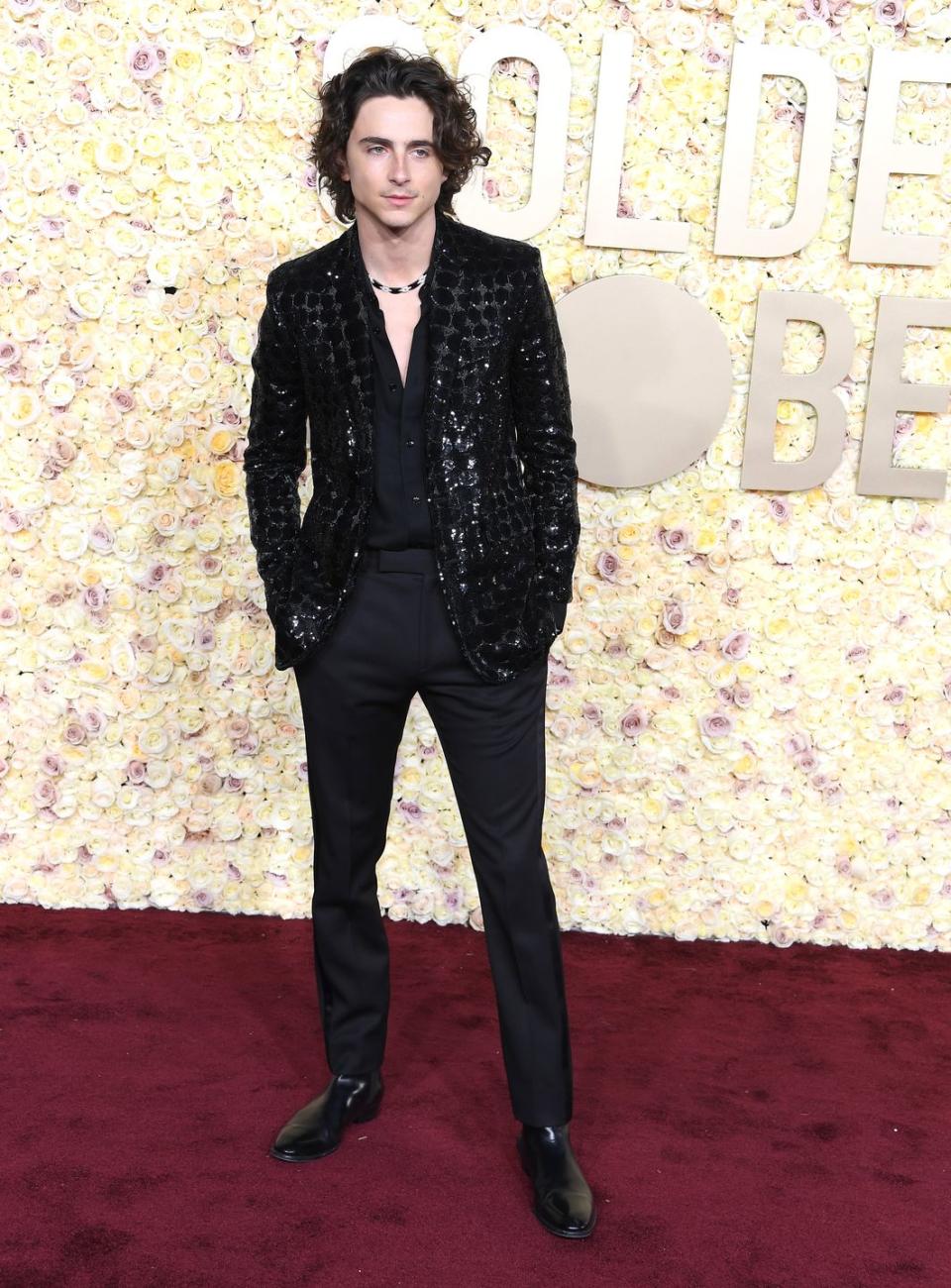The Hollywood Heart-Throb Is Back, But Do We Want It?

Aged 10, I remember telling my mother about my crush: his blue eyes, blonde hair, cute freckles. 'He sounds like a real heart-throb,' she smiled. It was the first time I’d heard the expression, but it wouldn’t be the last. Quite a few men turned out to be heart-throbs, according to my mother. James Dean (but not John Wayne). Robert Redford (but not Paul Newman). Sean Connery (but never under any circumstances Roger Moore). A heart-throb, it transpired, was a man of swoonsome specificity, an elite cabal whose members had one crucial thing in common.
Other than their ability to incite lust, exactly what they had in common wasn’t clear. If beauty is in the eye of the beholder, heart-throb status resides somewhat lower down a person’s anatomy, and is even more subjective. Or at least it was. But thanks to a new tranche of stars, the Hollywood heart-throb feels more well-defined than it has in a long time, its definition as honed and chiseled as the biceps and cheekbones of its protagonists.

Take Jacob Elordi. Who? I’m kidding. Everyone has heard of Jacob Elordi, for if you didn’t catch him as Nate Jacobs in Euphoria, you surely watched him as Oliver Quick in Saltburn over Christmas. Ever obliging, director Emerald Fennell indulged viewers with a full complement of heart-throb scenarios, from black tie to bathtub to wheat field. You fancy winsome men on bikes? Here he is on one. White vest tops and angel wings? Covered. Reclining moodily in a wicker chair in skimpy trunks? Tick. Whatever you think of Elordi’s acting (his stint as Elvis in Sophia Coppola’s Priscilla received mixed reviews), it would be churlish to deny he is a heart-throb; one cast in the traditional Hollywood mould.

And then there’s Jeremy Allen White, everyone’s favourite niche crush until Calvin Klein came along and blew it all by casting him in those ads. No longer a secret lust object among early fans of The Bear (or even earlier fans of 2011’s Shameless), the 32 year-old actor’s charms are now plastered across billboards all over the world, lighting up your socials in all their pristine white boxer briefed glory (£45 for a three-pack, ladies). Those claiming White is too short (he’s 5’ 7”) to be a heartthrob have had to eat their words. In the Calvin Klein ads, it’s fair to say his height is not the focus.
Tall, dark, handsome and gym-honed leading men like Elordi (and shorter, dirty blonde, handsome and gym-honed men like Allen White) haven’t so much been in favour in recent times, with the lust cycle (it’s like the trend cycle, but for ovaries) favouring quirkier stars - Timothée Chalamet, Rami Malek, Harry Styles - who have a more nebulous, androgynous appeal. A decade ago, pretty, baby-faced men like these would tend to be passed over in the acting world in favour of more traditionally masculine looks. But research suggests that younger people are more drawn to delicate features, and don’t place such a high value on qualities such as height or muscle tone, even equating them with negative traits such as ‘toxic masculinity’.

Just as fashion trends wax and wane, so too do our proclivities for various types of beauty. In the 1920s, ‘Latin lovers’ such as Rudolph Valentino were the perfect leading men for silent movies. By the 1930s, they’d given way to tougher, square-jawed men like Clark Gable and James Cagney. Tracking changing tastes through the decades, it’s interesting to note how, as with skirt lengths, the pendulum tends to swing from one extreme to the other. While the 1950s were dominated by delicately featured heart-throbs like Marlon Brando and Montgomery Clift (both of whose sexuality was widely debated), the 1970s was all about the traditional macho man, a symphony of muscles and exposed chest hair. By the 1980s, Burt Reynolds had been replaced by the sort of heart-throbs that reflected crasser, materialistic times: idols like Richard Gere, Don Johnson and Tom Cruise, men who never strayed far from an Armani suit or an expensive pair of (inevitably mirrored) sunglasses. In the 1990s, these heartthrobs gave way to more sensitive souls who excelled at playing drifters, doomed lovers and depressives - stars such as Leonardo DiCaprio, Johnny Depp, and River Phoenix.
Skipping over the fact that the supermodel-dating 49-year-old DiCaprio has had something of an image change since the days he played Rimbaud in Total Eclipse (1995) and Romeo in Romeo & Juliet (1996), it’s worth noting that 1990s-era DiCaprio had much in common with stars like Timothée Chalamet, Tom Holland and Harry Styles. Given our ongoing obsession with the 1990s, it makes sense that recent stars would share similar qualities with quintessential 1990s leading men. Just as in the 1990s, the early 2020s was all about deconstructing traditional masculinity, and viewing it through a wider and more interesting lens.

Will the latter half of the 2020s be dominated by more traditional Hollywood hunks? It’s likely not that simple. Sure, stars like Jacob Elordi, Jeremy Allen White, Jonathan Majors, and Aaron Taylor Johnston represent a step change, but beneath the rippling muscles, they’re sensitive, complicated and far more nuanced than traditional hunks of old. But then, aren’t we all more sensitive and complicated? If the pandemic taught us anything, it’s that sexuality and desire are fluid, and far less linear or straightforward than we thought. How else to explain women crushing on Andrew Scott, Ben Whishaw, and Daniel Levy?
For all the closeted stars who were warned their homosexuality would be box office (ergo career) suicide if it was revealed, how vindicating to know that women will happily watch films and TV shows with gay male leads, and don’t give a hoot about their sexuality. Like desire, heart-throbs come in many forms. Whatever their latest physical incarnation, maybe we’ve all come to realise the wisdom of the old adage 'it’s what’s inside that counts'.
You Might Also Like


